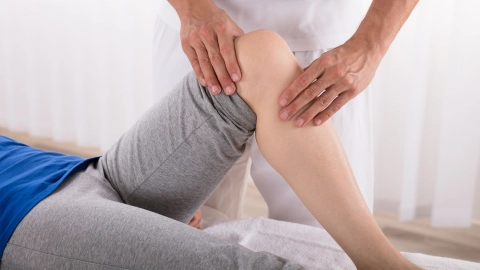ICD-Code M22.4: Chondromalacia patellae
The cartilage on your kneecap is damaged.
The knee joint connects the thigh to the lower leg. The knee joint is made up of 3 bones. These bones are the thighbone (femur), the shinbone (tibia) and the kneecap. The kneecap sits in a groove at the front of the thighbone.
The kneecap is embedded in a tendon of a muscle. This muscle pulls from the thighbone and from the hip to the shinbone and extends the knee. The kneecap helps this muscle to transfer force more effectively. The kneecap also reduces the friction between the tendon and the thighbone.
The cartilage on the kneecap can be damaged if the kneecap comes under too much strain. The cartilage may also get damaged if the position of the kneecap in the groove of the bone changes.
The cartilage damage can cause pain in the knee, for example when you straighten up from squatting. The knee may also be swollen.
Additional indicator
On medical documents, the ICD code is often appended by letters that indicate the diagnostic certainty or the affected side of the body.
- G: Confirmed diagnosis
- V: Tentative diagnosis
- Z: Condition after
- A: Excluded diagnosis
- L: Left
- R: Right
- B: Both sides
Further information
Source
Provided by the non-profit organization “Was hab’ ich?” gemeinnützige GmbH on behalf of the Federal Ministry of Health (BMG).



